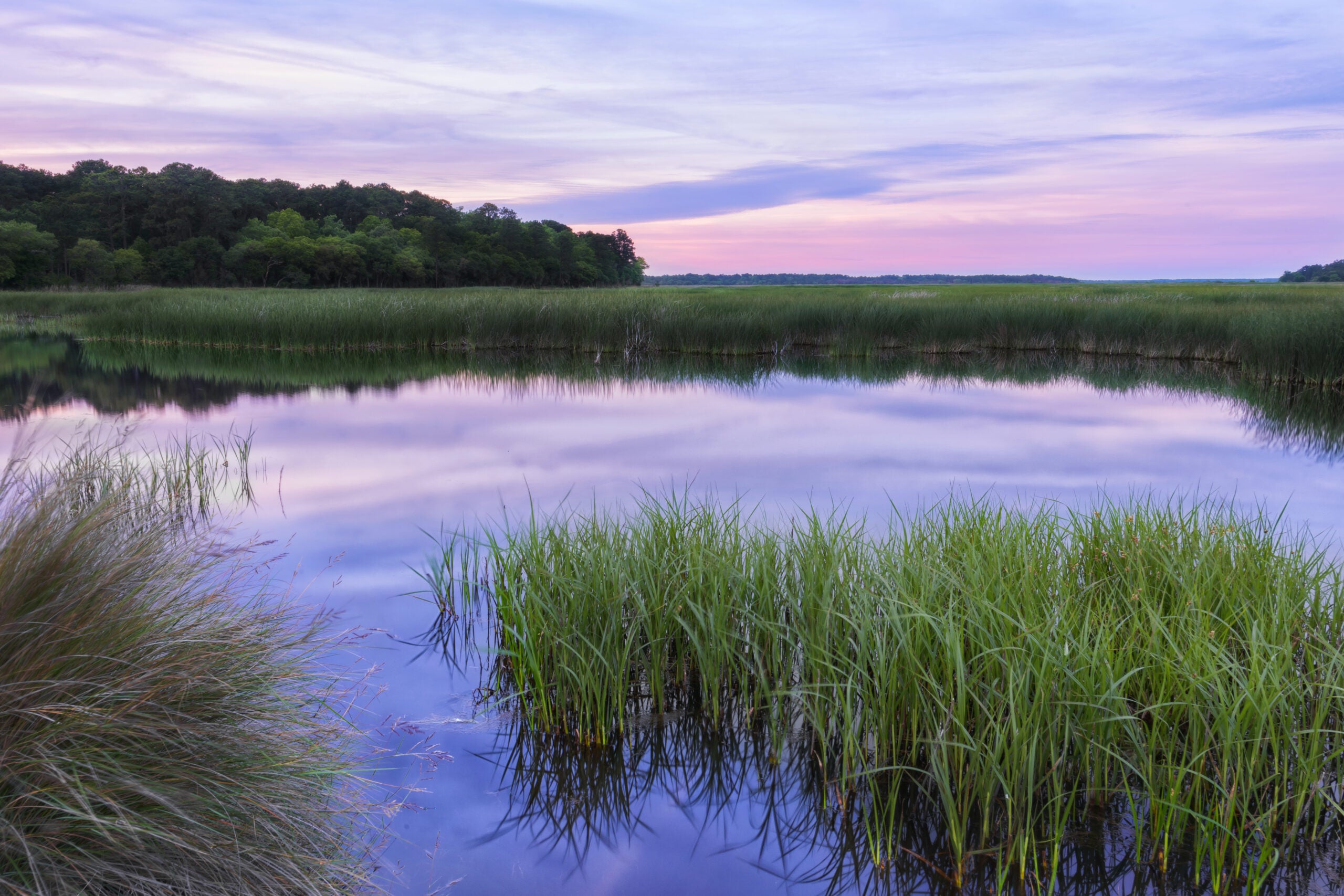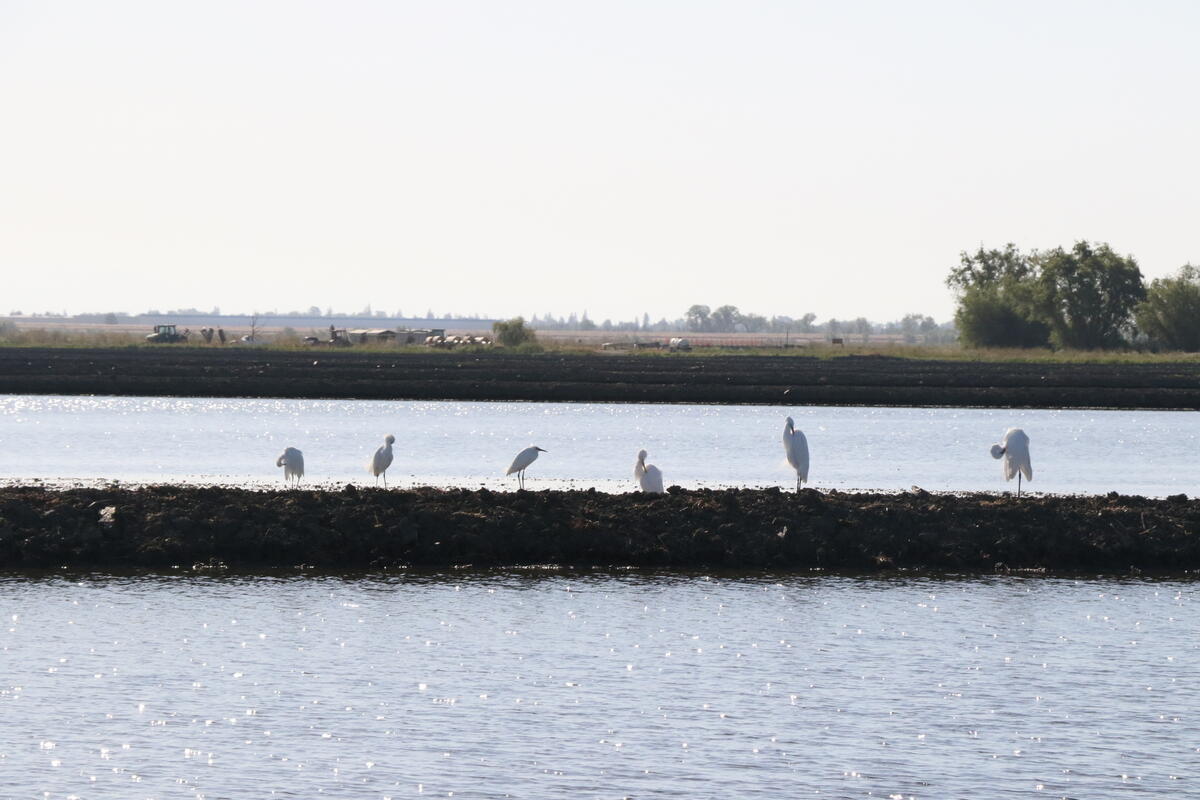By: Ivy Steinberg McElroy, EDF’s Climate Resilient Coasts & Watersheds Intern
The International Day for Disaster Risk Reduction was established by the United Nations General Assembly to accelerate action to strengthen disaster resilience. In the United States, this day comes on the heels of a major blow to our Nation’s wetlands. Earlier this year, the U.S. Supreme Court ruled in Sackett v. Environmental Protection Agency (EPA) to narrow the scope of protections for wetlands, as defined in the Clean Water Act. As result, this landmark decision could cause detrimental impacts to the environment, communities and economy. That means more flooding – especially for more vulnerable communities downstream.
The impact of the Clean Water Act
In 1977, a federal goal of “no net loss” was created to protect wetlands, requiring wetlands lost to infrastructure development to be replaced by restoring or building new wetlands. This has since been endorsed by two Republican and three Democratic presidents – and the authority in section 404 of the Clean Water Act has been a key tool to achieve this goal.
Prior to the Sackett v. EPA decision, the Clean Water Act protected wetlands that had a “significant nexus” to federally protected waters and included perennial or ephemeral connections via surface water or groundwater. Now, only wetlands with a continuous surface water connection to federally protected waters are federally protected.
The result of the Sackett decision is to remove federal oversight from any wetlands that are not directly adjacent to or connected to a river, stream, lake or ocean. This will weaken the act’s original intention to “restore and maintain the chemical, physical and biological integrity of the nation’s waters,” protecting it for drinking, recreation and for wildlife that depend on aquatic habitats. It will also make it harder to achieve “no net loss.”
Putting the Nation’s wetlands at risk
Wetlands that are especially at risk include numerous freshwater wetlands, bogs, peatlands, brackish and interdunal wetlands, floodplain wetlands cut off from rivers by levees and berms, desert arroyos and intermittent streams.
When we lose wetlands, we also lose many benefits they provide to communities. Wetlands serve as flood buffers, filter pollutants out of water, absorb carbon, provide habitat for wildlife and are a source of food, jobs and recreation for humans. Studies have shown that wetlands that lack surface water connections still provide physical, chemical and biological functions that could affect the integrity of downstream waters and even ephemeral wetlands dissipate floodwaters and reduce the downstream risk of property loss or human injury.
The ruling is expected to result in increased flooding, water pollution, well water contamination and increased water prices.
Be prepared for more flooding, especially in downstream communities
Wetlands are pivotal in protecting communities from flooding, acting as natural sponges that absorb and hold floodwaters, as well as reduce their speed. Loss of wetlands upstream can increase flooding downstream, and on neighboring communities.
During Hurricane Sandy, wetlands saved the 12 states impacted from an additional $625 million in damage. One hectare of wetland loss in developed areas costs society $8,290 in flood mitigation value.
Wetlands and floodplains also can reduce downstream flood damages by more than 50%. This is because downstream communities often experience increased flooding due to the actions of upstream neighbors. For instance, development and growth in a Houston suburb led to increased runoff during major storms that flows downstream toward downtown Houston and caused flooding.
Flood impacts will likely be unequal
Moreover, flooding in the United States disproportionately impacts minority communities, and future flood risk will continue this trend. Not only are these communities more vulnerable, but they often have fewer resilience strategies in place to recover from flood events. Research shows Black residents impacted by natural disasters tend to lose wealth in the aftermath while white residents tend to gain wealth, as disaster aid tends to favor white populations.
Without federal protections, many wetlands are now controlled by state policies. While some states have effective wetlands laws, it is important to recognize that water does not recognize state borders. Therefore, development in one state with weaker laws could have a profound impact on states located downstream. The economic, environmental and social toll of flood risk is already too high and only increasing with climate change. The Sackett v. EPA decision will only exacerbate these impacts.
To continue protecting communities and our Nation’s critical ecosystems, EDF calls on state governments to create or maintain strong wetland protections for flood risk. We also encourage the Biden administration to endorse our nation’s long-time goal of “no net loss of wetlands” and take actions to build resilience against future flooding.











